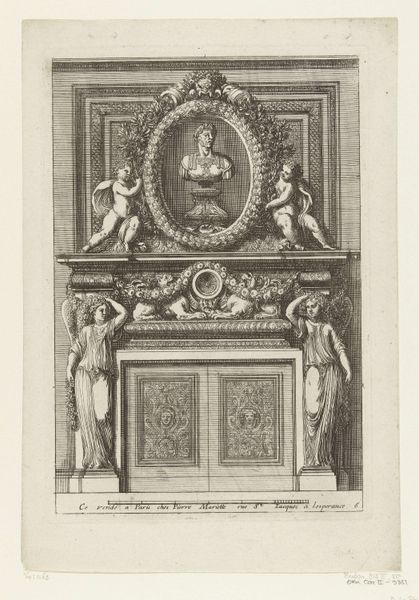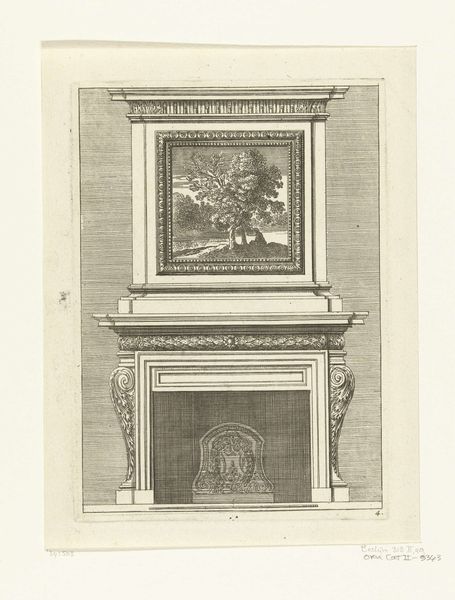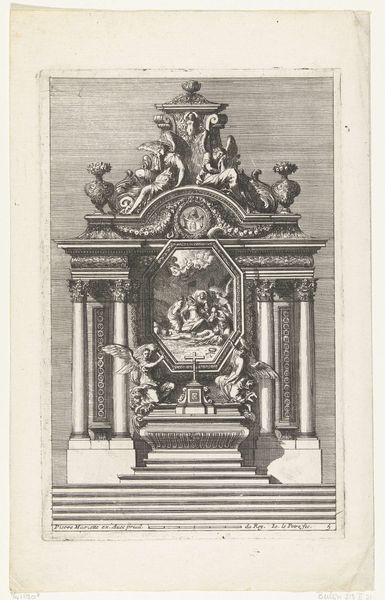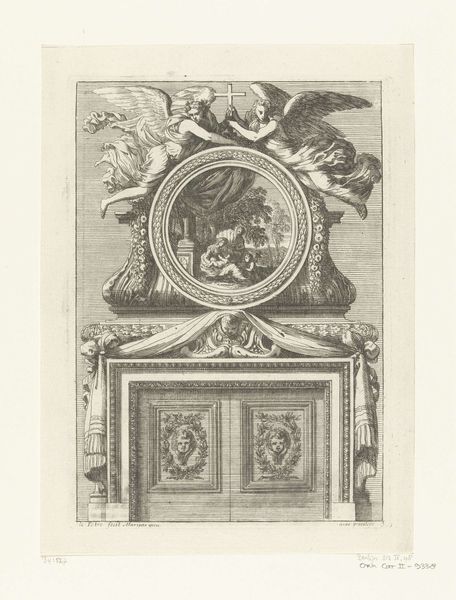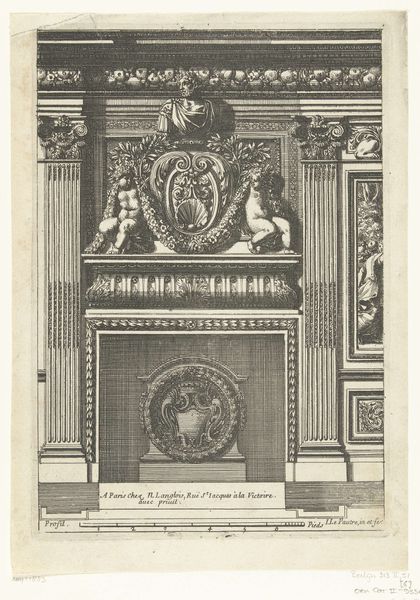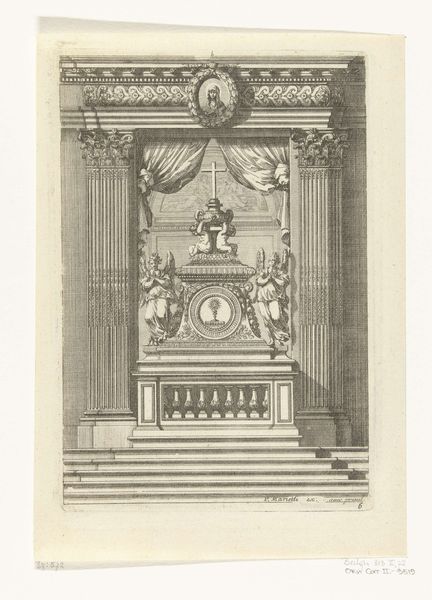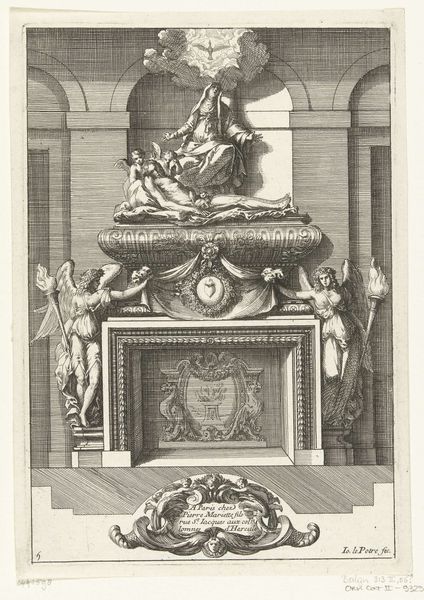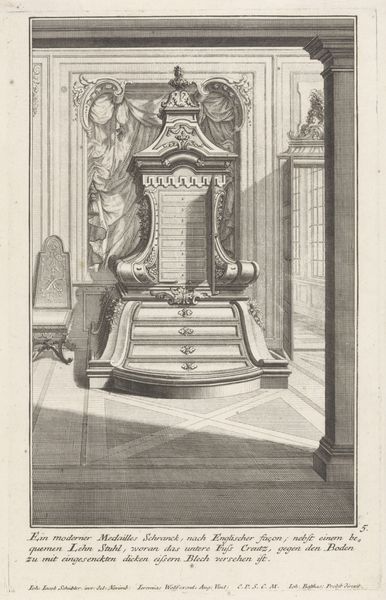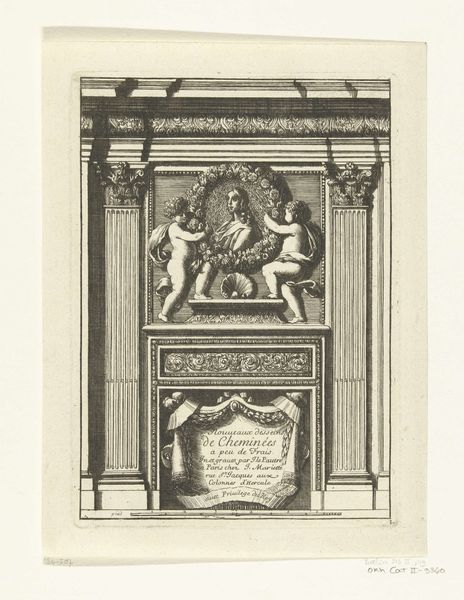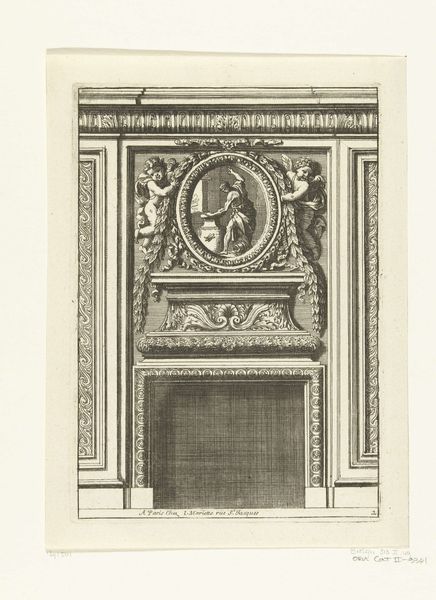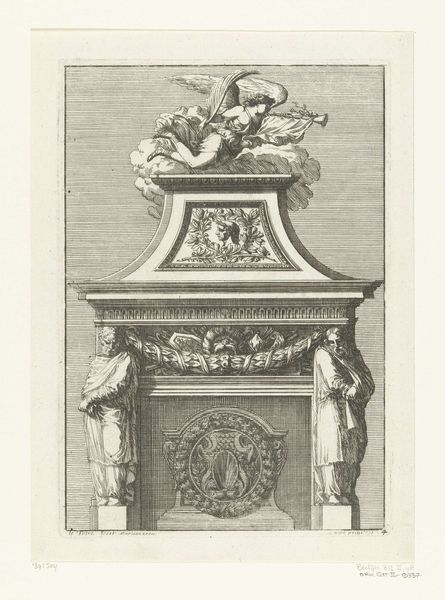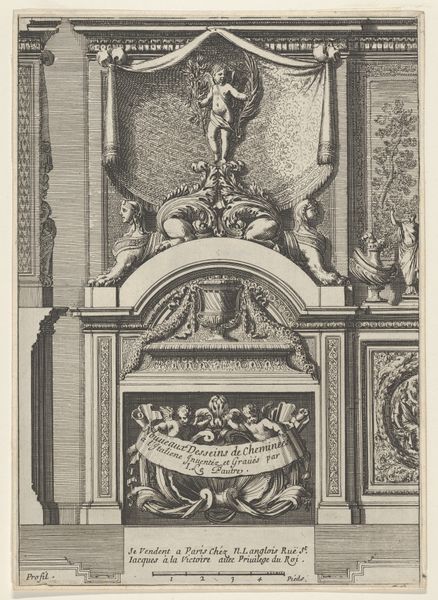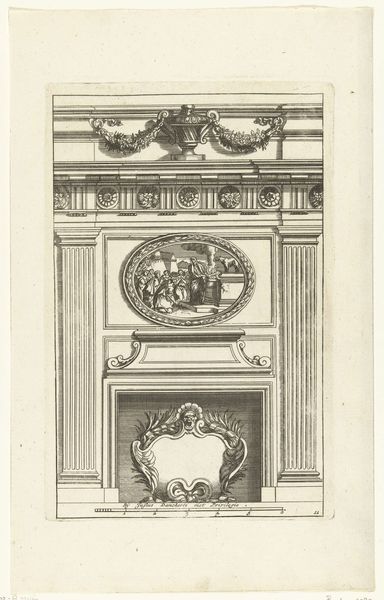
print, engraving, architecture
#
baroque
# print
#
classical-realism
#
form
#
line
#
decorative-art
#
engraving
#
architecture
Dimensions: height 199 mm, width 142 mm
Copyright: Rijks Museum: Open Domain
Jean Lepautre made this print of a chimney piece flanked by two women, using etching. The magic of etching lies in its ability to create incredibly fine lines. The plate is coated with a waxy, acid-resistant ground, the design is scratched into this surface, and acid does the work of biting into the exposed metal. The depth of the lines can be carefully controlled, giving the printmaker tremendous control over the final image. Here, Lepautre's design shows a high degree of skill. This wasn't art for art's sake, but a pattern for potential clients to view. Prints like these were crucial for disseminating design ideas in the early modern period. They fueled a cycle of taste and consumption, as wealthy patrons sought to emulate the latest styles in their own homes. The degree of work that went into etching these designs—the labor of the artist, the skilled techniques involved—was all geared toward promoting more work in the decorative arts trades. The very circulation of such designs served as a powerful engine of capitalism.
Comments
No comments
Be the first to comment and join the conversation on the ultimate creative platform.
